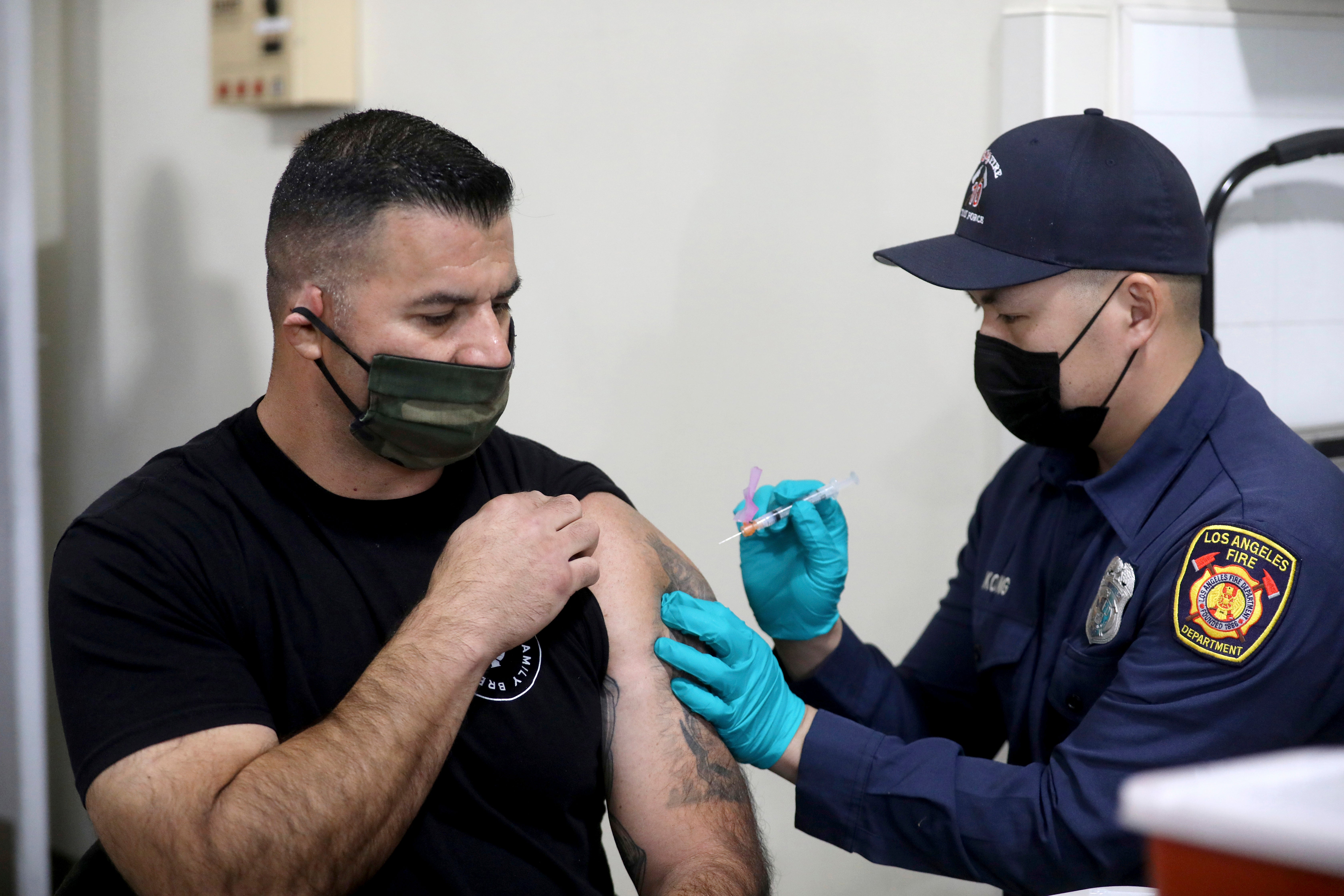Lockdowns likely to be extended as California hospitals fill
California is expected Tuesday to extend strict stay-at-home orders in areas where intensive care units are running out of beds

California is expected Tuesday to extend strict stay-at-home orders in areas where intensive care units are running out of beds, after Gov. Gavin Newsom warned residents to brace for the effect of a surge upon surge upon surge of coronavirus cases from holiday travel.
Newsom said that even with admissions to hospitals plateauing in some places, the state was destined to move into a “new phase” that it’s been preparing for as it sets up hospital beds in arenas, schools and tents, though it is struggling to staff them.
Intensive care units in Southern California and the San Joaquin Valley have no capacity remaining, according to state figures, and Newsom said it was “self-evident” his latest stay-home order would be extended in places where hospital ICUs have less than 15% capacity.
“As we move into this new phase, where we brace, where we prepare ourselves for what is inevitable now ... based on the travel we have just seen in the last week and the expectation of more of the same through the rest of the holiday season of a surge on top of a surge, arguably, on top of, again, another surge,” Newsom said Monday.
State officials also notified hospitals that the situation is now so dire that hospitals should prepare for the possibility that they will have to resort to “crisis care” guidelines established earlier in the pandemic, which allow for rationing treatment.
The current surge of cases is due in large part to Thanksgiving travel and celebrations despite warnings from public health officials not to gather as the state was already in the midst of an exponential growth in cases.
That surge has created the greatest challenge for the state’s health system since the pandemic began and has been regularly breaking records for case counts, hospitalizations and deaths from COVID-19.
While daily coronavirus cases were down to 31,000 Monday from a seven-day average above 37,000, it was likely due to a lag in data from the weekend, Newsom said.
Models used for planning show hospitalizations more than doubling in the next month from about 20,000 to more than 50,000.
The state has several makeshift hospitals that are taking patients but needs more health care workers to staff the facilities, Newsom said. It has deployed more than 1,000 people to 116 hospitals and other facilities in the state through a volunteer corps or the National Guard. On the upside, Newsom said California finally expects to receive more of the traveling health care workers it had requested in anticipation of the shortage.
The Department of Public Health is sending an emergency medical team to Los Angeles to help better distribute patients among hospitals. Some hospitals are well above capacity and others are below capacity, Newsom said.
Over the weekend, most Los Angeles County hospitals reached a crisis point where they had to divert ambulances because they didn’t have beds available.
“The sad reality is that all indicators tell us that our situation may only get worse as we begin 2021,” Public Health Director Barbara Ferrer said.
Los Angeles County, which accounts for a quarter of the state’s 10 million residents, has about 40% of the state’s 24,000 deaths. Anyone who traveled out of Los Angeles County is required to quarantine for 10 days upon return, the health department announced in a news release Monday.
“For those who traveled outside of LA County and recently returned, you may have had an exposure to COVID-19,” the release said. “The virus can take up to 14 days to incubate, and for many people the virus causes no illness or symptoms. If you go back to work, go shopping or go to any gatherings at any point over the next 10 days, you could easily pass on the virus to others.”
Travel over Christmas is anticipated to create another spike in cases that may not show up for several weeks because of a lag from the time someone is exposed to the virus to when they get test results and ultimately fall sick enough to require hospitalization.
Although there are indications more people are heeding stay-home orders that apply to all of the state but northernmost rural counties, there was a bump in air travel in Los Angeles similar to Thanksgiving.
The number of passengers flying out of Los Angeles International Airport was down about 70% from last year between Dec. 21-27, but reached a high of 43,000 on Dec. 23, which was only 60% below last year’s figures, spokesman Heath Montgomery said. That was about as busy as the airport has been since the pandemic began.
State health secretary Dr. Mark Ghaly urged people not to gather for New Year’s celebrations, which would further compound problems in the month to come. He said surveys about a month ago found only 30% of Californians were going to alter plans to gather or travel but more recent surveys show 50-60% changing their plans.
“Things that were, a month ago or two months ago, a low-risk activity today are really high risks because of the level of COVID that’s circulating in our communities,” he said.
___
Associated Press writers Janie Har in San Francisco, Don Thompson in Sacramento and Christopher Weber, Stefanie Dazio and John Antczak in Los Angeles contributed.